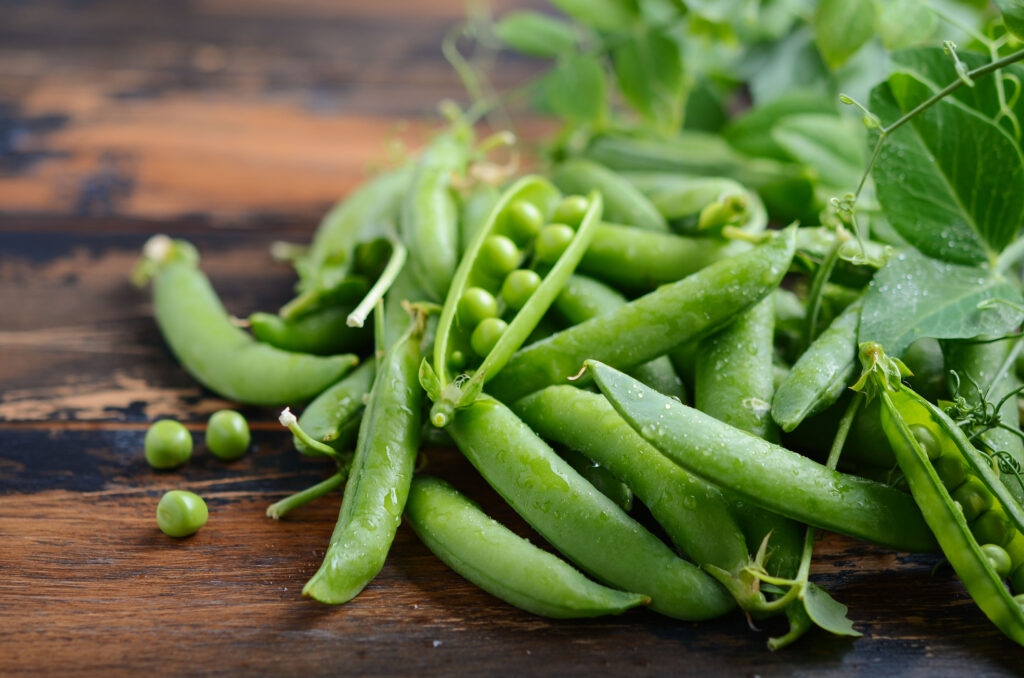
Early spring weather is sometimes cool, inclement, and downright gray. Perfect for peas! If you are a fair-weather gardener, well then, you’ll have to buy your peas at the market. On the other hand, if you want to partake in the best, sweetest tasting peas you have ever had, you will have to ignore or brave the weather and get outdoors in early spring.
Of course, early spring planting required additions of proper soil amendments and preparation for peas back in the fall. Major soil cultivation in early spring is important to avoid, especially in clay-loam soils. Excessive compaction becomes more probable in cold, wet soils. Compacted soils restrict rooting and leave them void of necessary oxygen. However, if you did not get the chance to enhance your soil last fall, fret not, add any proper amendments and lightly cultivate your pea rows 4 to 6 in. deep. This will work for this season.
How To Plant Peas

The best pea crops are started early in the spring, as mentioned. While all your other vegetable seed sits enviously, you can start to prepare your pea seed when average daytime temperatures reach 60° to 65°F, with soil temps. in the 40° to 50°F range.
Peas can be direct sown or started indoors 3 to 4 weeks ahead of planting out in individual, transplantable peat pots or Jiffy starter cells. Indoor seeding works well for sugar snap, English, and snow peas. Germination time will be cut down by pre-soaking seeds for 1 to 2 hours prior to planting. Be patient, in cold soils (around 40°F) pea seeds can take more than 20 days to emerge. As with any seeds the warmer the soil temps the quicker germination will be.

With legumes (beans & peas) it is important to use fresh inoculant powder, prior to sowing your pea seeds. Some folks will place the inoculant in a zip-lock baggie and drop in the freshly pre-soaked seeds to give them a gentle “shake ‘n’ bake” treatment, to coat the seeds. For direct sowing peas, it is also perfectly respectable to sprinkle inoculant on the soil-bed, after creating your 1 to 2 in. deep planting furrows. Space pea seeds 2 to 4 in. apart in rows that are 18 in. apart, then there is no thinning needed.
Top Jung Tip: When soils are cool and wet, shallow planting is best. If soils are warm and dry, plant seeds at the full 2 in. depth for best success.
Pea Production

For maximum yields give peas something to climb on. Most modern varieties will grow on vines 2 to 4 ft. tall, so you can erect standard trellis, fencing, or be creative with materials you have around the house like bamboo stakes, old chicken wire, or random tree branches that can work fine. Peas don’t need too much encouragement to climb.
Young pea plants can be quite vigorous, so keep a close watch on the soil moisture. The soil should be kept evenly moist but not soggy. Use the 1 inch per week watering plan to keep them happy. If their leaves start to develop a pale-yellow cast, you may want to fertilize with a good water-soluble, vegetable specific plant food like Neptune’s Harvest Fish and Seaweed 2-3-1 formula. With legumes, always avoid fertilizers higher in nitrogen, which can cause vigorous vine growth with little to no pod production.
Types of Peas

Just like with beans, there are many different types of peas. Peas are grouped by pod types, growth habits, and basically how they are used.
Garden or English Peas
English peas are used for shelling. You just eat the pea, not the pod. Our favorite varieties include:
- Green Arrow is one of the most popular shelling peas.
- Wando is a popular shelling type to stretch later into warmer spring temps.
- Little Marvel a.k.a Extra Early is the quintessential English garden pea. Crossing the pond, as they say, way back in 1908. It has been popular ever since.
Edible or Snap Peas
Snap peas are sizable peas in a stringless, sweet crunchy edible pod. Nature’s candy. Our favorite varieties include:
- Sugar Ann broke the mold for sweet, crisp flavor and pod production. 1984 AAS Winner.
- Super Sugar Snap is the improved selection of the original ‘Sugar Snap’ loved for years.
- Snak Hero is the newest “Eat fresh off the vine, until your eyes bulge” selection that has the advantage of growing with or without support. It’s a 2020 AAS Winner.
Snow Peas
Snow peas also have edible pods but are harvested prior to seeds (peas) getting large. Equally delicious eaten raw, steamed, or popularly stir-fried. Our favorite varieties include:
- Avalanche snow pea has a fantastically ornamental afila-type foliage that is perfectly self-supporting. Double podded and highly productive for easy picking.
- Oregon Giant plants are high yielding and produce enormous 5-inch-long stringless pods. Resistant to common wilt and powdery mildew.

By May, or even late April in slightly warmer climates, your early spring-planted peas will be twinning up their trellises. Even if the weather is cool, damp, and quite English-like, you’ll have “peas of mind” that your pea plants will be happy and well on their way to producing what should be some of the first harvested fruits of your gardening labor.
Jung Seed Company has over 800 seed varieties available! View our color catalog online or browse our website for all of your gardening favorites. To receive info on new products, exclusive deals, and specials, be sure to sign up for our weekly email.
